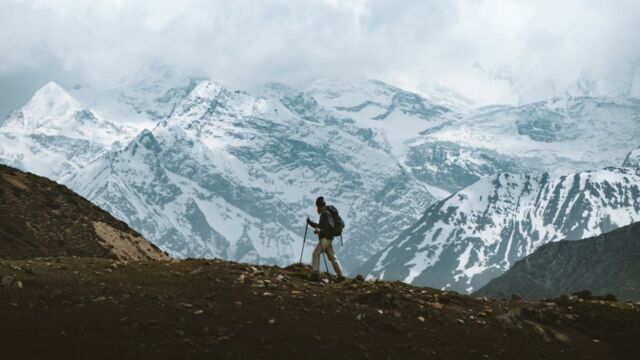What happened? That's the question these experts are trying to answer following the unlikely discovery they've just made in a mountain lake on the Himalayas, the highest peak in the world. Several human bones have been unearthed. While the mountain range that shelters 'The Roof of the World' is the scene of many deaths, mainly of hikers attempting to set out on its assault, the low temperatures mean that they are preserved as they are; dressed as if frozen for eternity. Which brings us back to the previous question: what happened this time?
Discover our latest podcast
Skeleton Lake
It was in the Indian Himalayas, in Lake Roopkund, some 40 metres wide, that the finds were made. Human skeletons were found both in and around the lake. In all, nearly thirty. A discovery that has rightly earned it the nickname of 'Skeleton Lake'. Finding dead people in the Himalayas is not uncommon; finding bones is a little more so.
In an attempt to retrace the history of what might have happened at 5,000 meters above sea level, archaeologists carried out analyses to determine the age and genome of the bones. And what they found was surprising, to say the least. The experts realized that a large majority of them were linked to the Indian ethnic group, which can be explained by geographical proximity; while others were linked to the Mediterranean and a smaller proportion to South-East Asia.
Read more:Remains of two children discovered in suitcases by family who bought them at auction
Death expeditions?
Through further DNA analysis, the archaeologists came to the conclusion that the 'locals' had died over 1,000 years ago, while the deaths of the others were more recent, around 1800 AD. Professor David Reich of Harvard Medical School explains:
The history of Lake Roopkund is more complex than we had anticipated. We never thought we'd discover migratory flows from the Mediterranean in the 19th century.
Some of the skulls found at the scene showed damage similar to that caused by large hailstones. Half of them were analyzed as belonging to unrelated women. Were they part of a pilgrim expedition? Were they on their way to a nearby temple or to the lake as part of a ritual? For the moment, questions remain unanswered.
Skeleton Lake, Himalaya has 300 to 800 peoples bones, have been a mystery since firstly reported in 1942, pic.twitter.com/eYYGDtZZRY
— Raja Farrukh Hussain💙 (@Raja_Farrukh_) February 25, 2021
Read more:Ancient sex toy discovered by archaeologists in Poland (PHOTOS)
This article has been translated from Gentside FR.
Sources used:
The Atlantic: The Mystery of ‘Skeleton Lake’ Gets Deeper
Endorfeen: Frozen Graves: The Bodies on Mount Everest















